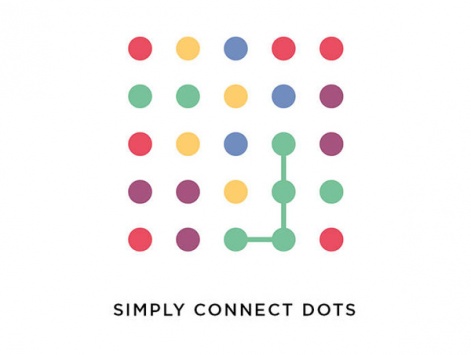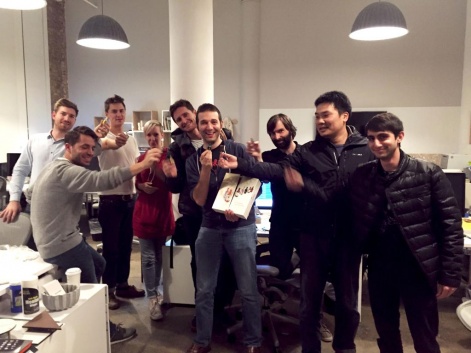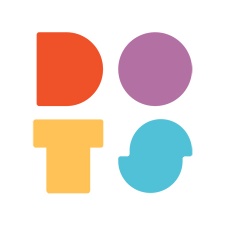New York-based development studio Dots was founded on the belief that anyone can enjoy a great game.
It's a mantra that serves to turn the mobile industry - viewed by many as a bloodthirsty Tyrannosaurus Rex that feasts on the tender flesh of weary developers - into an cute, fluffy, and altogether less threatening, creature. Let's say, a Labradoodle.
Indeed, the folks over at Dots, who you might know as the team behind the aptly titled puzzlers Dots and TwoDots, set out to prove that the only thing developers need to succeed are games that demand to be played.
After bringing together a crack team of illustrators, musicians, animators, designers and engineers, and securing some funding from the investment firm Betawork, Dots began to not only grow, but thrive.
Now that the studio has two critically adored and free-to-play games under its belt, we caught up with one of the firm's co-founders, Paul Murphy, to find out more about the team's past, present, and future.
Take me back
"We built Dots at this other company called Betaworks, which is a unique place because they do a lot of investments and build startups like we build games," begins Murphy, explaining how the studio was born.
"So, we had this pretty awesome environment to experiment in, and once the original Dots took off we believed we could build a company that stood for thoughtful design and original, unique gameplay."

"So we took some seed capital from Betaworks to help us hire our first few people, and then, in a short space of time, we made enough money to hire some new people, and build our second game.
"Now that our second game is out there, we're doing pretty well financially, so we've been able to grow the studio that way."
Clean, beautiful
Just why, though, was Dots, and its sequel TwoDots, lapped up by consumers and critics alike? The answer undoubtedly lies in the game's addictive simplicity, while the fact that it's one of the most beautiful games of 2014 doesn't hurt either.
That impeccable design is what makes it truly stand out from the crowd, and it was unearthed in the most unlikeliest of places.
"Patrick Moberg is the guy who created the first game, and we had talked about making the game, so we had the context," explains Murphy.
"We wanted to do something different, that we knew, and Patrick took this trip to Japan, where he went to visit the hometown of this Japanese artist, Yayoi Kusama, who does these amazing installations that use dots.
"She's a really amazing artist, and what happened was this town, Matsumoto, had done a tribute to her, and they'd covered the entire town in dots.

"Patrick gets inspired very easily, and he was immersed in this land of dots, knew we wanted to make a game, and put the two together. He came back with the first version of the game which was a simple dot board with some animation.
We believed we could build a company that stood for thoughtful design and original, unique gameplay.Paul Murphy
"As we decided to turn the game TwoDots into a company, and build out a set of games, we just said we should stick to this concept of creating original games that have some inspiration from the arts, whether it's film, high art, or music."
Artistic endeavour
After the title surpassed expectations on iOS, the next natural move was to try and crack the ever-lucrative Android market.
Unfortunately, the team soon realised that they wouldn't be able to realise their vision on Google's operating system. At least, not without a little help from Unity.
"When it launched, TwoDots performed really well, and when we started thinking about Android, we had a process were we took our original code and translating it over so it would run natively on Android," recalls Murphy.
"It worked, because we got 90 to 95 percent of the game over, but it was frustrating because we never felt like we could get the entire product on Android, and as a team that obsesses over every pixel, and every animation, we never really felt like we were in complete control.
"We made a really painful decision in August to say we need a platform that supports both iOS and Android, so we had to start retraining the entire team to use Unity, as well as bringing in some outside experts to help us through the transition.
"The difficulty has been that our Android product has taken two months longer than we wanted, but the good thing is that once it's out it should be a good product."

Despite those teething problems, the Dots team doesn't regret the way they handled the transition.
The team hasn't been swayed by hindsight bias - a luxury many studios can't afford - and even after finding success with Dots and TwoDots, they understand that, in the cut-throat world of mobile gaming, attempting to run before you can walk is a suicidal move.
"I think, even though it's been painful, we did it the right way. When we launched our first game it was all about getting a product that we could build on the market as quickly as possible to see if people like it," continues Murphy.
"The reality is, not to sound pessimistic, is that most of the time people aren't going to adopt a product, especially a game.
Startups often overbuild in anticipation of that potential win scenario.Paul Murphy
"I think a lot of startups, especially game studios, make that mistake. They overbuild in anticipation of that potential win scenario, and if they win, if they get a hit, it's great, but usually they're not going to.
"The consequence of that is that they've then spent an extra six months, investing more time and money into something that they didn't even have to do in the first place.
"Our model then, is to get stuff made, get it out early, and then if it works go through all the pain of repaying the technical debt and work towards a more stable transition. So, I think we made the right decisions even though it's been a painful few months."
Onwards and upwards
The unexpected success of TwoDots has been a real bonus for the studio, and even though the team always believed the game had legs, they never imagined it would attract users so quickly.
"Since we released TwoDots the response has been great. Our adoption on TwoDots is about 10 times our adoption with Dots, in terms of how quickly people have downloaded it," says Murphy.
"We can only attribute that to two things: the first being that we've managed to build a brand that people know, so that when we launched the second game a lot of people were already convinced that we were going to produce something they liked, and the second being that the mobile market has simply grown."
The continued growth of the mobile market might be good news for developers, such as Dots, who're starting to build a successful brand, however, for those who were only just keeping their head above water, it could bring about an untimely end.
"On the downside, that also means the marketplace is incredibly competitive," admits Murphy.
"It's hard to prepare for that, and, honestly, if we were a completely new developer without an existing install base, I'd be pretty concerned as well."
Lessons learned
So, as the mobile market continues to expand, what can developers do to ensure they don't end up on the proverbial slab?
"Make sure that you’re designing things that are fun, not frustrating, to touch, and be mindful about the fact that you’re designing for four to five inch screens," implores Steve Sadin, the studio's head of product.
"If a player touches something in your game, and then they're confused or upset about what happens on-screen - that's really bad. Similarly, if a player misses out on part of the action because their finger is in the way, then they’re going to be very frustrated."

"Personally, I’m only able to effectively deal with the pressures of development when I’m working on a project that I’m proud of, and I like and trust the team that I’m working with," adds Sadin.
"The fact is, if you’re concerned about quality, you’re working under tight deadlines, and you’re even a little bit neurotic, then making games will inevitably be very stressful at times.
The fact is that, if you want to do it right, making games will inevitably be very stressful at times.Steve Sadin
"In order to make up for that, I need to know that the game that I’m working on is great - or at least has the potential to be great - and my team is amazing."
Hey now, you're a rockstar
When all the success stories have been told, and all the advice has been dished out, there's only really one thing you need to remember: become a developer because that's what you enjoy doing.
Game developers are quickly becoming the rockstars of our technology-fuelled age, and if, suggests Murphy, you're serious about stepping into their world, you're going to have the best time of your life.
"I never really imagined I'd be working as a developer. I was recently talking to my five year-old nephew who looks at me like a superstar," laughs Paul
"It's pretty cool. Our team consists of 20 people now. 95 percent of the team has a creative background, so you're just constantly surrounded by people who are incredibly creative. It really is super fun."
You can download TwoDots from the App Store or Google Play, it's free, or check out the company's open positions here.






















